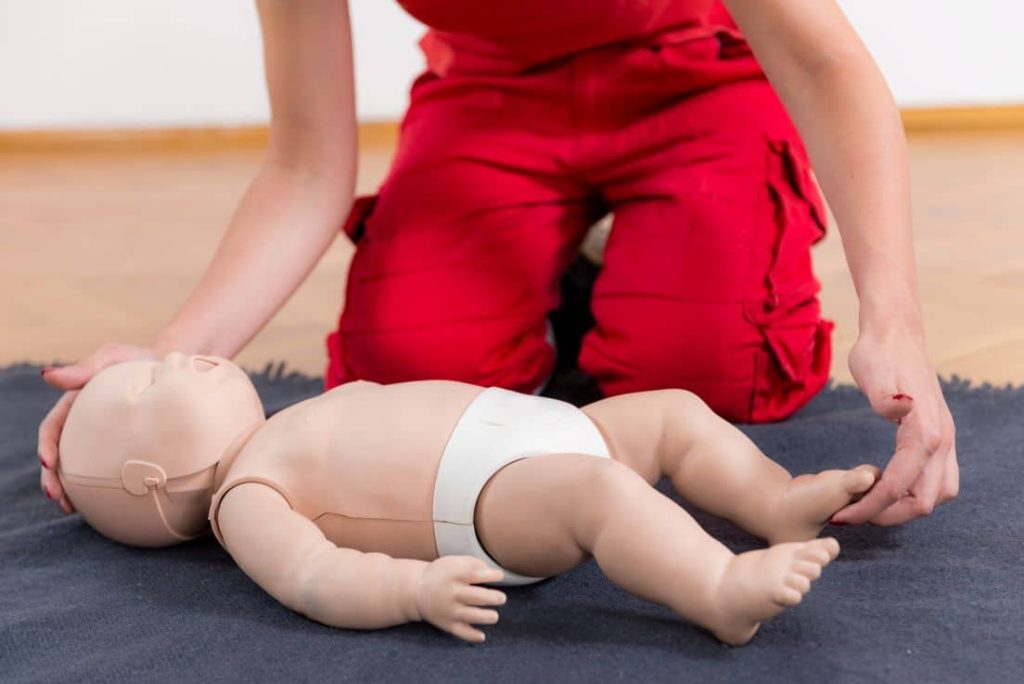Every parent’s worst nightmare is facing a life-threatening emergency with their child. Cardiac arrest in infants, while rare, requires immediate recognition and action to save lives. When seconds count, knowing what to look for could make all the difference between life and death.
Understanding Infant Cardiac Arrest
Cardiac arrest occurs when the heart suddenly stops beating effectively, causing blood flow to vital organs to cease. Unlike adults, where cardiac arrest typically stems from underlying heart disease, infants most commonly experience cardiac arrest as a result of respiratory failure or shock. This fundamental difference makes recognizing cardiac arrest in infants particularly challenging yet critically important.
According to the American Heart Association, approximately 20,000 children experience cardiac arrest each year in the United States. The survival rate dramatically increases when cardiac arrest is identified early and proper resuscitation efforts begin immediately.
Recognizing Cardiac Arrest in Infants: The Critical First Assessment
When approaching an unresponsive infant, conducting a proper assessment within the first few seconds is crucial. Here’s how to check if a child is in cardiac arrest:
Step 1: Check Responsiveness
Gently tap the infant’s foot or shoulder and call their name loudly. An infant in cardiac arrest will be completely unresponsive to stimulation. Unlike sleep, where gentle stimulation usually elicits some response, an infant in cardiac arrest will remain still and unresponsive.
Step 2: Check Breathing
Position yourself so you can observe the infant’s chest and feel for breath:
- Look for chest rise and fall
- Listen for breath sounds
- Feel for exhaled air against your cheek
In cardiac arrest, breathing will be absent or may present as gasping or “agonal” breaths – irregular, shallow breaths that should not be mistaken for normal breathing. These gasps indicate brain stem activity in the absence of effective circulation and confirm the need for immediate CPR.
Step 3: Check Pulse
For infants under one year of age, check the brachial pulse (inside of the upper arm between the elbow and shoulder). Press gently with two fingers for 5-10 seconds. A pulse rate below 60 beats per minute with signs of poor perfusion is considered inadequate for infants and requires immediate intervention.
Remember: The entire check for responsiveness, breathing, and pulse should take no longer than 10 seconds. If there’s any doubt, proceed as if cardiac arrest is occurring.
Early Identification of Cardiac Arrest in Children
Early identification of cardiac arrest means recognizing not just the arrest itself but the warning signs that may precede it. Cardiac arrest rarely happens without warning in otherwise healthy infants.
Pre-Arrest Warning Signs
Recognizing cardiac arrest in infants often means identifying the progression of symptoms that lead to arrest. These may include:
- Respiratory Distress:
- Rapid breathing (more than 60 breaths per minute)
- Significant retractions (visible sinking of chest between or below the ribs)
- Nasal flaring
- Grunting sounds with breathing
- Head bobbing with respiration
- Circulatory Compromise:
- Unusually pale or mottled skin
- Cool extremities compared to the trunk
- Delayed capillary refill (longer than 2 seconds)
- Decreased urine output
- Neurological Changes:
- Unusual lethargy or difficulty waking
- Decreased responsiveness to parents or stimulation
- Weak cry or inability to cry
- Poor muscle tone
- Sudden Changes:
- Abrupt color change, particularly to blue or gray
- Sudden limpness
- Loss of consciousness
Parents and caregivers who notice these progressive signs should seek emergency medical attention immediately, as they may indicate an infant is progressing toward cardiac arrest.
Signs and Symptoms of Cardiac Arrest in Infants
When cardiac arrest occurs, several definitive signs appear. Understanding these signs of cardiac arrest in infants can empower caregivers to act quickly:
Immediate Signs of Cardiac Arrest
- Complete Unresponsiveness: The infant won’t respond to voice, touch, or painful stimuli.
- Absence of Normal Breathing: No visible chest movement or only occasional gasping breaths.
- No Detectable Pulse or Very Slow Pulse: In infants, a pulse below 60 beats per minute with signs of poor perfusion requires intervention.
- Sudden Collapse: In witnessed cases, cardiac arrest often presents as a sudden collapse.
- Cyanosis: Bluish discoloration of the lips, tongue, and skin, particularly around the mouth.
- Dilated Pupils: As oxygen to the brain decreases, pupils may become fixed and dilated.
Differentiating from Other Conditions
It’s important to distinguish cardiac arrest from other conditions:
- Seizures: Unlike cardiac arrest, seizures typically involve rhythmic jerking movements and may be preceded by a cry.
- Choking with Partial Airway Obstruction: A choking infant who can cough or make sounds still has some air movement and requires different interventions than cardiac arrest.
- Fainting (Syncope): Unlike cardiac arrest, fainting is typically brief with a quick return to consciousness.
Common Causes of Cardiac Arrest in Infants
Understanding what leads to cardiac arrest in infants can help with prevention and recognition. Common causes include:
- Respiratory Failure: The most common cause in infants, arising from:
- Severe respiratory infections (bronchiolitis, pneumonia)
- Choking or airway obstruction
- Drowning
- Smoke inhalation
- Sudden Infant Death Syndrome (SIDS): A leading cause of death in infants under 1 year.
- Congenital Heart Defects: Structural heart problems present from birth.
- Septic Shock: Overwhelming infection leading to circulatory collapse.
- Severe Dehydration: Often from gastroenteritis with vomiting and diarrhea.
- Trauma: Including head injuries, chest injuries, or severe blood loss.
- Electrolyte Imbalances: Potassium abnormalities, particularly affecting heart rhythm.
- Poisoning or Drug Exposure: Accidental ingestion of medications or household substances.
Immediate Actions When Recognizing Cardiac Arrest in Infants
When you’ve identified cardiac arrest in an infant, immediate action is necessary:
- Call for Help: Have someone call 911 immediately while you begin resuscitation. If you’re alone, perform CPR for 2 minutes before calling 911.
- Begin High-Quality CPR:
- Place the infant on a firm, flat surface
- Perform chest compressions using two fingertips at the center of the chest just below the nipple line
- Push hard (approximately 1.5 inches deep) and fast (100-120 compressions per minute)
- Allow complete chest recoil between compressions
- Minimize interruptions in compressions
- Provide Rescue Breaths:
- After 30 compressions, open the airway using a gentle head-tilt, chin-lift
- Cover the infant’s mouth and nose with your mouth
- Give 2 gentle breaths, looking for chest rise
- Continue cycles of 30 compressions to 2 breaths
- Use an AED if Available:
- For infants under 1 year, use pediatric pads if available
- If pediatric pads aren’t available, adult pads can be used, ensuring they don’t touch
- Follow the AED prompts
- Continue Until Help Arrives: Don’t stop CPR until emergency personnel arrive and take over, the infant shows obvious signs of life, or you’re physically unable to continue.
Prevention and Preparation
While not all cases of infant cardiac arrest can be prevented, many risk factors can be mitigated:
- Create a Safe Sleep Environment: Follow the ABCs of safe sleep:
- Alone (no co-sleeping)
- Back (place infants on their backs)
- Crib (firm, flat surface with no soft bedding)
- Prevent Choking:
- Keep small objects away from infants
- Cut food into appropriate sizes
- Supervise feeding times
- Regular Medical Check-ups: Early detection of congenital heart defects and other conditions can prevent progression to cardiac arrest.
- Recognize Respiratory Infections: Seek medical attention promptly for significant respiratory distress.
- Learn Infant CPR: All parents, caregivers, and family members should be trained in infant CPR.
Importance of Proper Training
Recognizing cardiac arrest in infants and responding appropriately requires knowledge and skill. While reading about these techniques provides awareness, hands-on training offers confidence and competence when every second counts.
CPR training courses specifically teach:
- Proper recognition techniques
- Correct hand positioning and compression depth
- Appropriate rescue breathing methods
- AED use on infants and children
- Team dynamics for multi-rescuer situations
The Critical Role of Early Recognition
Research consistently shows that survival from cardiac arrest depends primarily on two factors:
- How quickly cardiac arrest is recognized
- How quickly and effectively CPR is performed
When cardiac arrest is identified within 1 minute and high-quality CPR begins immediately, survival rates can increase by more than 50%. Each minute of delay reduces survival by 7-10%.
Parents and caregivers are typically the first to notice something is wrong with their infant. Trusting parental instinct when something “just doesn’t seem right” and seeking medical attention promptly can identify pre-arrest conditions before they progress to full cardiac arrest.
Call to Action: Be Prepared to Save a Life
Don’t wait for an emergency to learn these critical skills. CPR Tampa, an American Heart Association training site, offers comprehensive, hands-on CPR certification Tampa and PALS certification Tampa courses that can prepare you to recognize and respond to infant cardiac arrest.
Their stress-free, hands-on classes include:
- Basic Life Support (BLS) for Healthcare Providers
- Advanced Cardiovascular Life Support (ACLS)
- Pediatric Advanced Life Support (PALS)
- CPR and First Aid for parents and caregivers
As the best CPR training provider in the Tampa area, they ensure you gain knowledge and confidence to act in an emergency. Remember, in cardiac arrest, the person administering CPR in the first few minutes is often the true lifesaver.
Conclusion: Early Recognition Saves Lives
Recognizing cardiac arrest in infants quickly can mean the difference between life and death. By understanding the signs and symptoms, knowing how to check properly, and being prepared to act immediately, parents and caregivers become the critical first link in the chain of survival.
While facing such an emergency is every parent’s fear, being prepared with knowledge and training transforms that fear into empowerment. The skills to recognize cardiac arrest in infants and respond appropriately aren’t just for healthcare professionals—they’re essential knowledge for anyone who cares for children.
Take the step today to become trained and certified. Your quick recognition and response could give an infant the greatest gift of all—a future.





